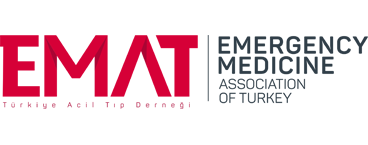Comparison of fentanyl and dexmedetomidine versus fentanyl and midazolam in procedural sedation for tube thoracostomy in emergency department – A randomized control study
Sarat Chandra Uppaluri1 , Anne Kiran Kumar2
, Anne Kiran Kumar2 , G. Suneel Kumar3
, G. Suneel Kumar3 ,
Mohammed Ismail Nizami3
,
Mohammed Ismail Nizami3 , Ashima Sharma3
, Ashima Sharma3
1Department of Emergency Medicine, AIG Hospitals, Hyderabad, Telangana, India
2Department of Anaesthesiology, Nizam’s Institute of Medical Sciences, Hyderabad, Telangana, India
3Department of Emergency Medicine, Nizam’s Institute of Medical Sciences, Hyderabad, Telangana, India
Keywords: Dexmedetomidine, midazolam, pain rating scale, tube thoracostomy
Abstract
OBJECTIVES: Effective sedation and analgesia during procedures not only provide relief of suffering but also frequently facilitate the successful and timely completion of the procedure. The aim of the study was to evaluate the efficacy of fentanyl and dexmedetomidine compared to fentanyl and midazolam in procedural sedation for tube thoracostomy in the emergency department (ED) in terms of analgesia and patient satisfaction with sedation during the procedure using Pain Numerical Rating Scale and a 7 point Likert like verbal rating scale for comfort rating of sedation.
METHODS: A randomized control study was conducted in 64 subjects admitted to the ED. Tube thoracostomy was performed in patients after the decision for Intercostal drain (ICD) placement taken on radiographic and clinical assessment depending on their condition warranting it and after optimally stabilizing the patient in the ED. Of the total study participants that met the inclusion criteria, 32 participants randomly received dexmedetomidine and the other 32 received midazolam.
RESULTS: Pain rating scale means were 2.3 ± 1.12 and 4.4 ± 1.72, respectively (P < 0.001), in dexmedetomidine and midazolam groups. With regard to adverse effects, a statistically significant difference was seen with dexmedetomidine causing hypotension (P = 0.04) and midazolam causing desaturation (P = 0.008). The results also suggested that midazolam achieved sedation levels quicker than dexmedetomidine and this finding was statistically significant (P < 0.001). A statistically significant difference was observed (P < 0.001) with regard to mean patient verbal ratings at recovery of sedation satisfaction between the two groups, 6 ± 0.77 (dexmedetomidine group) versus 4.7 ± 0.8 (midazolam group).
CONCLUSIONS: When observed in terms of analgesia, anxiolysis, and better sedation, dexmedetomidine proved to be superior. Our study shows that this drug could be a better alternative to traditional benzodiazepines for procedural sedation in ED.
How to cite this article: Uppaluri SC, Kumar AK, Kumar GS, Nizami MI, Sharma A. Comparison of fentanyl and dexmedetomidine versus fentanyl and midazolam in procedural sedation for tube thoracostomy in emergency department – A randomized control study. Turk J Emerg Med 2025;25:116-22.
Written prior approval obtained from the Institutional Ethics Committee of Nizam’s Institute of Medical Sciences (Review letter number EC/NIMS/2702/2021) dated June 17th, 2021.
1. Dr Sarat Chandra Uppaluri‑Conceptualisation and data collection
2. Dr Anne Kiran Kumar‑Design and data analysis
3. Dr G Suneel Kumar‑Data interpretation and writing original draft
4. Dr Mohammed Ismail Nizami‑Review and editing
5. Dr. Ashima Sharma‑Language and review.
None Declared.
None.

